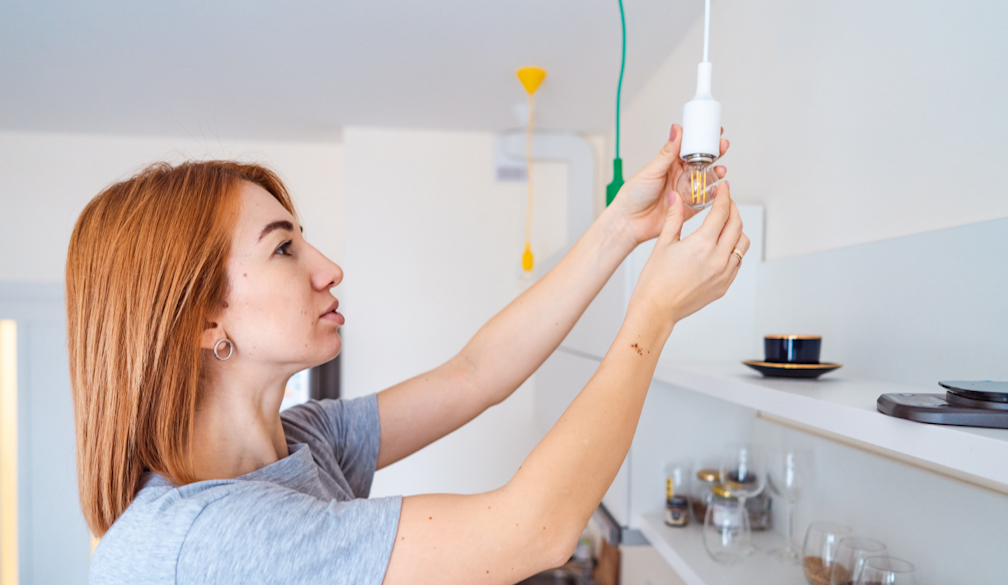How to Fix Flickering Light at Home?

Uncomfortable, distracting, and even dangerous are all words to describe lights that flicker. Whether it's a slow, intermittent flicker or a fast, continuous flashing, you need to fix this problem quickly to make sure your home is secure and works properly.
Get an electrician Sydney trusts to learn about detailed instructions on how to fix flickering lights in your house in this detailed tutorial. We'll go over all the possible causes in detail.
1. Getting a Grip on the Fundamentals
It is important to know what causes flickering lights before you go into fixing them. This problem could be caused by a number of things, including:
- Flicker lights: Lights might flicker if there is an abrupt change in voltage, such as a spike or dip.Get an electrician Sydney trusts, helping you to deal with flicker lights.
- Overloaded circuits: Lights that flicker could be an indication that you're using more electricity than a single circuit can handle.
- Flickering lights might be caused by loose connections, which can happen when wires or fixtures are not properly fastened.
- Problematic light bulbs: If the light is flickering, it could be because you need to change the bulb.
- Dimmers that aren't compatible: If you're using a dimmer switch that isn't compatible with your light bulbs, you can notice flickering.
2. Prioritizing Safety
Always put safety first before beginning troubleshooting tasks. It is imperative that you observe the following safety measures:
- Put out the lights and disconnect any electronics in the impacted area.
- Make sure you're using protective gear like gloves and goggles.
- Consult a licenced electrician if you feel the need to do so.
Finding the Origin
Finding the cause of the problem is essential for efficiently fixing flickering lights. To identify the root of the problem, think about the following:
- Keep an eye on when the flickering happens: It should be noted if the flickering is confined to just one room or fixture, or if it affects the entire house. By making this note, you can narrow down the possible causes of the electrical system failure to a specific component.
- Check the lights in the area: Determine whether other lights in the same circuit are flickering if the problem is contained to a single room. If the problem is associated with the circuit, this can help pinpoint it.
- Analyse the light components: Try a different bulb to see whether the flickering one is the culprit.
- Check light controls: Verify that the dimmer switch is compatible with the type of lightbulb you're using and look for indications of damage or loose connections.
Protecting the Reliability of Electrical Systems
After you've found out where the flickering is coming from, you can fix the individual problem:
- If you notice any changes in the voltage or if you would want an examination, you should contact your utility company. Their job is to find out if the fault is with the power supply infrastructure and fix it if it is.
- If the flickering is caused by circuit overload, you might want to think about spreading the electrical load out among several circuits. Another option is to hire an electrician to add circuits or do a load study to make sure the electricity is evenly distributed.
- Insecure linkages: Inspect the electrical panels, outlets, and switches, as well as all connections. Make sure all connections are snug and think about swapping out broken parts if necessary.
- Problematic light bulbs: To guarantee compatibility and longevity, replace a single flickering lightbulb with a new one from a respected brand.
- If you're using a dimmer switch and you're seeing flickering, check to see if the lightbulbs are compatible. Either get a dimmer switch that works with your system or go back to using a regular on/off switch.
3. Looking for Expert Help
In most cases, simple repairs or replacement will fix flickering lights, but in rare cases, you may need to call a professional. Get in touch with a certified electrician if you see any of the following:
- Continued flashing in spite of attempts to resolve the issue
- Power spikes or electrical arcs of extreme intensity
- Hot outlets, a burning smell, and flickering
- Problems with flickering after recent electrical work
4. Safety Steps
The best way to deal with a flickering lights problem is to prevent it from happening in the first place. To reduce the frequency of flickering lights in your house, follow these steps recommended by experts:
- Plan for routine checks: To prevent electrical problems like flickering lights, it is a good idea to have a professional electrician check your system on a regular basis.
- Spend your money on high-quality parts: To make sure they last and work together, only buy electrical components, light bulbs, and switches from trusted brands.
- Keep circuits from being overloaded: Make sure that electrical loads are distributed well across circuits. It may be necessary to upgrade the electrical panel and install additional circuits.
- Protected linkages: Check the electrical connections for tightness and security on a regular basis.
- Compatibility with dimmer switches: It is important to use the dimmer switches that are specifically made for the type of lightbulb being used. Install and use according to the manufacturer's instructions.
Final thoughts
Flickering lights in the house are no longer an insurmountable obstacle thanks to the information you've gained from this detailed tutorial. Always put safety first, figure out where the problem is coming from, and then try to fix it the right manner. To keep your electrical system running well and avoid the hassle of annoying flickering lights, it's best to take preventative measures and get professional help when needed.
